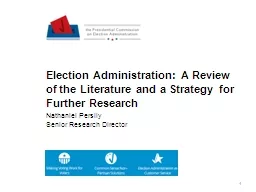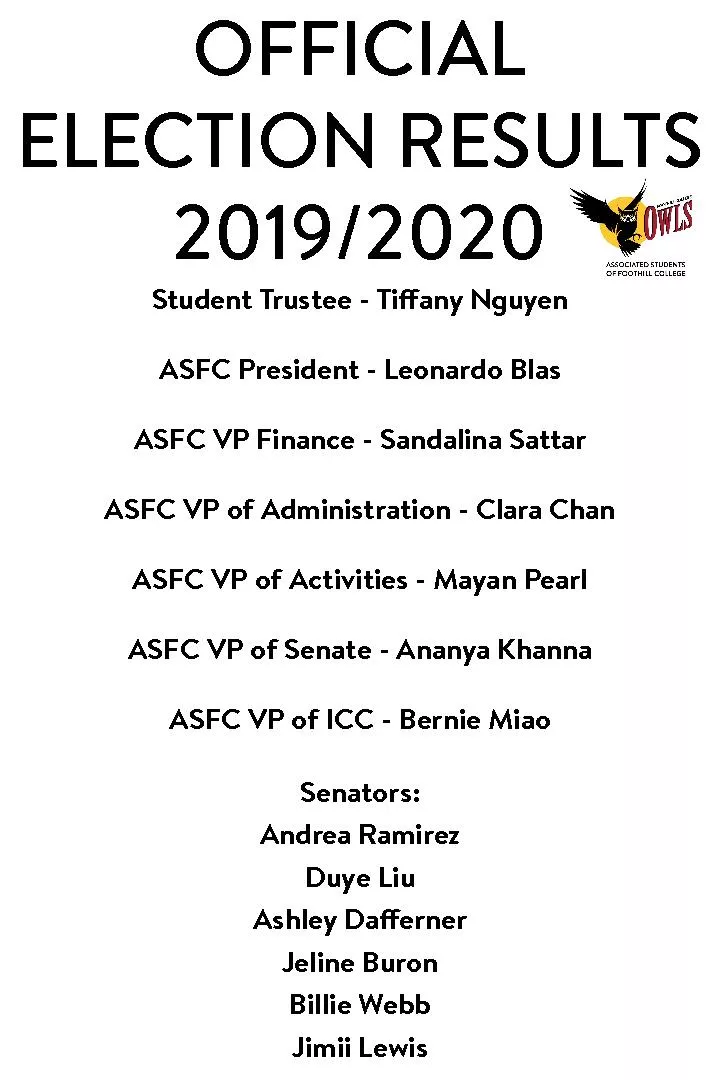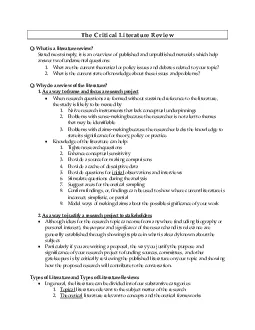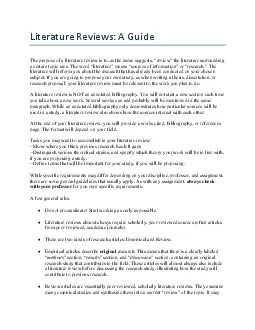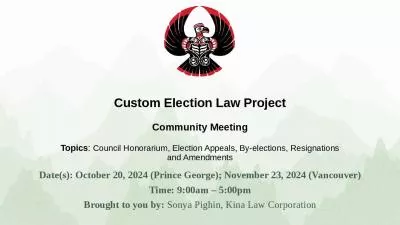PPT-1 Election Administration: A Review of the Literature and a Strategy for Further Research
Author : debby-jeon | Published Date : 2018-03-06
Nathaniel Persily Senior Research Director How Far We Have Come 2000 Election and Help America Vote Act represent a watershed in the study of the mechanics of US
Presentation Embed Code
Download Presentation
Download Presentation The PPT/PDF document "1 Election Administration: A Review of t..." is the property of its rightful owner. Permission is granted to download and print the materials on this website for personal, non-commercial use only, and to display it on your personal computer provided you do not modify the materials and that you retain all copyright notices contained in the materials. By downloading content from our website, you accept the terms of this agreement.
1 Election Administration: A Review of the Literature and a Strategy for Further Research: Transcript
Nathaniel Persily Senior Research Director How Far We Have Come 2000 Election and Help America Vote Act represent a watershed in the study of the mechanics of US election system Immediate focus turned to questions of residual votes ballots cast but not counted as votes due to technological malfunction especially by punch card machines. Damian.Gordon@dit.ie. Important Link. www.damiantgordon.com. Module Description. Ideas, Researching, Writing…. Refining, Researching, Writing…. Researching. , Refining, . Writing. …. Module Description. What is a . L. iterature Review. It is an evaluation and comparison of various pieces of research.. It shows the reader what:. previous research has been done in your field,. critiques previous methodology, . Graduate School Seminar. College of Business and Law. Friday December 2. nd. , 2 to 4.30. Why a specific seminar on LR?. Critical step / deliverable in PhD research. Critical skill of the researcher. Louise . Livesey. Academic Skills Adviser. This workshop will:. . Explain what completing a review of literature involves. Offer tips on how to manage the reviewing process. Show you basic strategies for taking a critical approach to literature at . Luciano Rispoli. Formulating a research question. Before you begin writing a research proposal, take some time to map out your research strategy. A necessary first step is to formulate a . research question. An . up-to-date . analysis. and . synthesis . of the scholarly conversation on a given topic. It should tell the reader what arguments scholars have made / are making, how they are making them (method) if necessary, and how the conversation has changed over time. The Lit. Review should demonstrate that you can see the outlines of the larger scholarly conversation on your given . La gamme de thé MORPHEE vise toute générations recherchant le sommeil paisible tant désiré et non procuré par tout types de médicaments. Essentiellement composé de feuille de morphine, ce thé vous assurera d’un rétablissement digne d’un voyage sur . FREEWRITE. What is a literature review?. What questions (or concerns) do you have about writing a literature review?. WORKSHOP OVERVIEW. Design. Purpose. Process. LITERATURE REVIEWS ARE EVERYWHERE!. In the New Yorker, “Apathetic Children” article. . SYFTET. Göteborgs universitet ska skapa en modern, lättanvänd och . effektiv webbmiljö med fokus på användarnas förväntningar.. 1. ETT UNIVERSITET – EN GEMENSAM WEBB. Innehåll som är intressant för de prioriterade målgrupperna samlas på ett ställe till exempel:. OFFICIAL OFFICIAL ELECTION RESULTS 2019/2020 Student Trustee - Ti any Nguyen ASFC President - Leonardo Blas ASFC VP Finance - Sandalina Sattar ASFC VP of Administration Q What is a literature reviewStated most simply it is an overview of published and unpublished materials which help answer two fundamental questions12What is the current state of knowledge about these The purpose of a literature review is to as the name suggests 147review148 the literature surrounding a certain topic area The word 147literature148 means 147sources of information148 or 147research14 Getting started. You’ll need a notepad on which to make notes as you go along, or you could make notes, paste images, etc. on your device.. You can view these slides:. as a slide-show for any animations and to follow links. Community Meeting. Topics. : . Council Honorarium, Election Appeals, By-elections, Resignations and Amendments. Date(s): October 20, 2024 (Prince George); November 23, 2024 (Vancouver). Time: 9:00am – 5:00pm.
Download Document
Here is the link to download the presentation.
"1 Election Administration: A Review of the Literature and a Strategy for Further Research"The content belongs to its owner. You may download and print it for personal use, without modification, and keep all copyright notices. By downloading, you agree to these terms.
Related Documents

